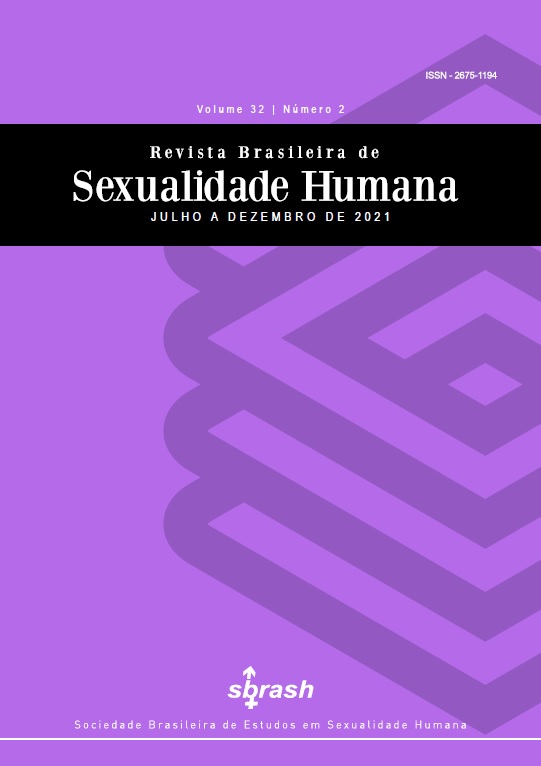NEGATIVE GENITAL SELF-IMAGE AS A PREDICTOR OF SEXUAL DISORDERS IN WOMEN
PHYSIOTHERAPEUTIC POSSIBILITIES
DOI:
https://doi.org/10.35919/rbsh.v32i2.976Keywords:
Self-concept, Sexual health, Genitalia femaleAbstract
It is increasingly common for women to express insecurity and dissatisfaction with the appearance of their genitals, a fact that can negatively influence their physical and psychological health, often triggering sexual dysfunctions. The objective of this work was to describe how negative genital self-image (NGSI) can cause changes in women’s sexual function and satisfaction and list the physiotherapeutic resources aimed at repairing genital dysfunctions and intimate aesthetics to improve self-image, self-esteem and sexual health. This is an integrative review, whose searches were carried out in the Lilacs, PubMed, Scopus, PEDRo and Web of Science databases, adding up to 501 studies. After reading the titles and abstracts, the articles were submitted to qualitative and methodological analysis. At the end, the sample of the present review comprised 4 articles with levels of evidence ranging from 4A to 6B. Studies suggest that NGSI is a predictor of sexual dysfunction, with younger women, who report dissatisfaction with their own bodies and with little or no sexual activity, the most likely to have impaired sexual function and satisfaction. Among the physiotherapeutic resources, described as promising therapies in the treatment of pelvic floor dysfunctions are pelvic muscle contraction exercises, electrostimulation and biofeedback, for NGSI, microneedling and radiofrequency. It is recommended that professionals involved in women’s health care investigate the presence of complaints regarding sexual function and satisfaction as well as their association with genital self-perception, in order to identify and intervene early in these situations, avoiding greater damage to self-esteem and mental health.
Downloads
Downloads
Published
How to Cite
Issue
Section
License
Copyright (c) 2021 Sarah de Souza Mendonça

This work is licensed under a Creative Commons Attribution 4.0 International License.



